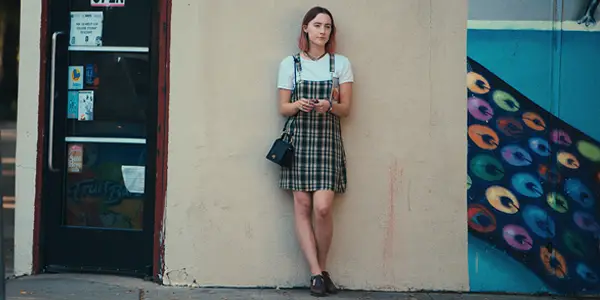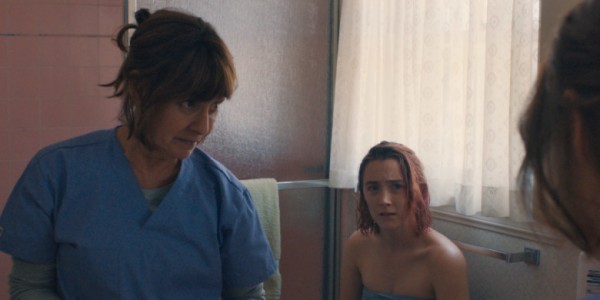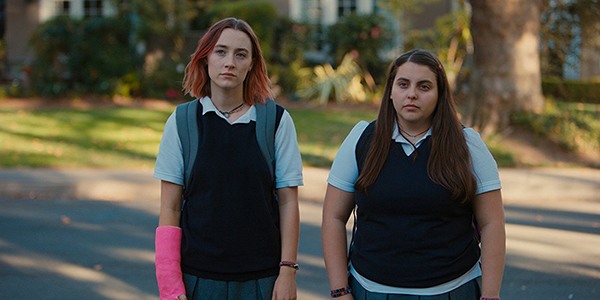Why LADY BIRD Should Have Been Nominated For Best Editing

Hazem Fahmy is a poet and critic from Cairo. He…
There’s no doubt about it, Lady Bird is making history. Besides being one of the most successful directorial debuts of the century, it’s managed to land Greta Gerwig an Oscar nomination for Best Director, making her only the fifth woman in the Academy’s history to receive such an acknowledgement. It’s a spectacularly big deal. This is, of course, not to mention the nods the film also received for Best Picture and Best Screenplay, as well as for Saoirse Ronan and Laura Metcalf. Safe to say, Lady Bird has received no shortage of well-earned praise.
And yet, I can’t help but feel like the film’s craft has been overlooked. I know, I’m greedy with the films I love, I want them to win everything – which already makes this superb Oscar season mind-numbingly frustrating – but I also believe in giving credit where it’s damn due, and editor Nick Houy’s sublime work has received very little of it. The vast majority of positive attention geared at the film has centered on Gerwig’s screenplay and Ronan’s performance, and for very good reason – they are by far the two strongest elements of the film – but not enough has been said about how they are brought to life by the tender subtlety of the editing.
Memories and Moments
As Gerwig has mentioned, Lady Bird was intended to resemble a memory; a play-out of a tumultuous year in retrospect. Viewed in this light, Gerwig’s direction appears even more impressive as one begins to scrutinize how she pursued and executed the aesthetic and ambiance of a memory. There’s, of course, the borderline exaggerated character work that walks the thin line between specificity and absurdity. There’s Sam Levy’s postcard cinematography which captures Sacramento as a longing diasporic native would remember. And then there’s the editing.

Brisk, yet measured, and concise without ever sacrificing detail, Houy’s work is a tremendous feat of compression, packing the entire span of a year – senior year of high school, no less – in an impossibly lean 93 minutes. Most popular high school films that cover a similar period of time usually clock in much closer to a 100 minutes, and even American Pie was 95 minutes. These numbers might seem miniscule, but when you’re dealing with a whole year of events and developments, every single minute counts, and Lady Bird’s runtime is astounding when you consider the film’s fundamental beats, just the sheer amount of content from that first college tour till Lady Bird’s first week as a freshman.
This brevity is, of course, first and foremost a testament to the brilliance of Gerwig’s script, a text she spent years writing and rewriting, cutting down from 350 pages to about a hundred. But such a keen sense of narrative rhythm needed a fellow eye as sharp as Houy’s to catch the magic and trim the fat. The end result is a sequence of idyllic, sometimes heartbreaking, snapshots of a year in which a young girl begins to grow comfortable in her own skin.
Beyond embodying the sensation of memories, this snapshot structure of Lady Bird is a master-class of succinct filmmaking. Take the opening scene: a quiet moment of intimacy in a motel immediately followed by loud conflict in a car. No sooner are we introduced to the bond and love that hold them together than we are to the ego and miscommunication that threaten to tear them apart. We don’t spend much time in either place, but we get what we need out of them. We understand the nature of the relationship, each woman’s mannerisms and ticks. We can already see how deeply they both care about each other, but aren’t sure how to express it.

These breathtaking snapshots of intimacy punctuate all of Lady Bird’s relationships. There’s Lady Bird and Julie in the vestment room eating communion wafers, a perfect highlight of their friendship’s dynamic. There’s Lady Bird and Danny in the rose garden, an almost fleeting vision of what they could have been in another world. The rich density of these kinds of moments grounds us in the experience of seeing a year flash before your eyes. The whole thing feels outrageously fast, but the little details stick – they are, in fact, what shape it.
High School in Hindsight
When I think back to my own last year of high school, this is exactly how I remember it. More importantly, this is exactly how I remember experiencing it. Time passes peculiarly when you’re young and aware that you’re on the cusp of great change. You see yourself changing before your very eyes, even as you desperately try to hold on to who you think you’re meant to be. You make a big deal out of relationships and disappointments, fights and firsts. Your first legally bought pack of cigarettes (and in some cases, porno magazine) becomes your self-made entry to adulthood.
There are countless reasons why Lady Bird has managed to attain such universality, unchained by its period and setting. Gerwig and Houy’s astute grasp of time is chief among them. By giving every moment its due, while maintaining a sharp narrative flow, director and editor assembled together one of the most memorable and singular coming of age films of all time. There’s no question: Gerwig deserves every ounce of praise she has received for her impeccable vision and commitment to her character – it’s just a shame Houy has not received his fair share for his contribution.

Of course, if we’re talking strictly about the Oscars, it does make sense how they would ignore a film like Lady Bird for Best Editing. Like much of the Oscars’ technical awards, the Editing category has historically focused on films with flashy and dynamic editing, much more so than a relatively quiet comedy-drama like Lady Bird. This decade has continued the tradition of heavily featuring war flicks, action romps, and thrillers, with only snappy, fast-paced dramas being granted a nomination.
Why Lady Bird Should Have Been Nominated For Best Editing: Conclusion
In all fairness, this year, while following a somewhat predictable path for the Editing category, was an exceptionally tough one, what with the flamboyant blockbusters Baby Driver and Dunkirk, as well as the in-your-face dramas I, Tonya, The Shape of Water, and Three Billboards Outside Ebbing, Missouri. All five of these films display terrific pace and a clear, deliberate craft of editing. I understand why voters would choose to nominate them over a less ostentatious endeavor like Lady Bird. I still think they’re wrong. Yes, I am that arrogant about the films I love.
What other films do you think were snubbed? Tell us your thoughts in the comments below!
Does content like this matter to you?
Become a Member and support film journalism. Unlock access to all of Film Inquiry`s great articles. Join a community of like-minded readers who are passionate about cinema - get access to our private members Network, give back to independent filmmakers, and more.
Hazem Fahmy is a poet and critic from Cairo. He is an Honors graduate of Wesleyan University’s College of Letters where he studied literature, philosophy, history and film. His work has appeared, or is forthcoming in Apogee, HEArt, Mizna, and The Offing. In his spare time, Hazem writes about the Middle East and tries to come up with creative ways to mock Classicism. He makes videos occasionally.













